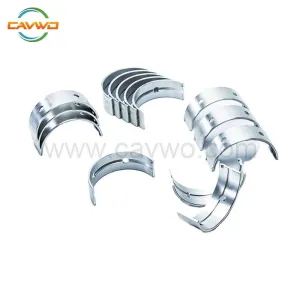What is the main part of a truck engine?
What is the main part of a truck engine?
Truck engines are the beating hearts of heavy-duty vehicles, propelling them across vast distances with power and efficiency. Understanding the key components that make up a truck engine is essential for drivers, maintenance professionals, and enthusiasts alike.
1. Engine Block:
1.1 Foundation of Power:
The engine block, often referred to as the "cylinder block" or "block," serves as the foundation of the truck engine. It houses the cylinders, pistons, and other critical components. The material and design of the engine block play a crucial role in withstanding the stresses of combustion and ensuring durability.
2. Cylinders and Pistons:
2.1 Combustion Chambers:
Cylinders are integral to the combustion process, providing the chambers where fuel and air mix, ignite, and generate power. Pistons move up and down within the cylinders, converting the energy from combustion into mechanical motion.
3. Crankshaft:
3.1 Power Transmission:
The crankshaft is a vital component responsible for converting the linear motion of pistons into rotational motion. It transfers the generated power to the transmission and, ultimately, to the wheels, propelling the truck forward.
4. Camshaft:
4.1 Timing Precision:
The camshaft controls the opening and closing of the engine's valves. It ensures that valves open and close at precise moments during the engine's operation, allowing for the intake of air and fuel and the expulsion of exhaust gases.
5. Valves:
5.1 Intake and Exhaust Regulation:
Featured content:How to Choose the Right Solid Scooter Tyres?
Valves, including intake and exhaust valves, regulate the flow of air and fuel into the cylinders and the expulsion of exhaust gases. The timing and efficiency of valve operation impact the overall performance of the engine.
6. Cylinder Head:
6.1 Sealing and Combustion:
The cylinder head sits atop the engine block and houses the cylinders, valves, and often the combustion chamber. It plays a crucial role in sealing the cylinders and facilitating efficient combustion.
7. Piston Rings:
7.1 Sealing and Lubrication:
Piston rings create a seal between the pistons and cylinder walls, preventing the leakage of combustion gases. They also help distribute oil for lubrication, ensuring smooth movement within the cylinders.
8. Connecting Rods:
8.1 Linking Pistons and Crankshaft:
Connecting rods link the pistons to the crankshaft, transmitting the linear motion of the pistons to the rotational motion of the crankshaft. These components must be robust to withstand the dynamic forces within the engine.
9. Oil Pump:
9.1 Lubrication System:
The oil pump is responsible for circulating oil throughout the engine, providing lubrication to critical components and dissipating heat. Proper lubrication is essential for preventing friction and maintaining the longevity of the engine.
10. Cooling System:
10.1 Temperature Regulation:- The cooling system, which includes components like the radiator, water pump, and coolant, regulates the engine's temperature. Efficient cooling is crucial to prevent overheating and maintain optimal operating conditions.
A truck engine is a sophisticated assembly of interconnected components, each playing a crucial role in generating power and ensuring the smooth operation of the vehicle. From the sturdy engine block to the dynamic interplay of cylinders, pistons, and the precision of the crankshaft, every part contributes to the overall performance and reliability of the engine. Understanding these main components provides drivers and maintenance professionals with valuable insights into the inner workings of these powerful machines, fostering a greater appreciation for the engineering marvel that is the truck engine.




